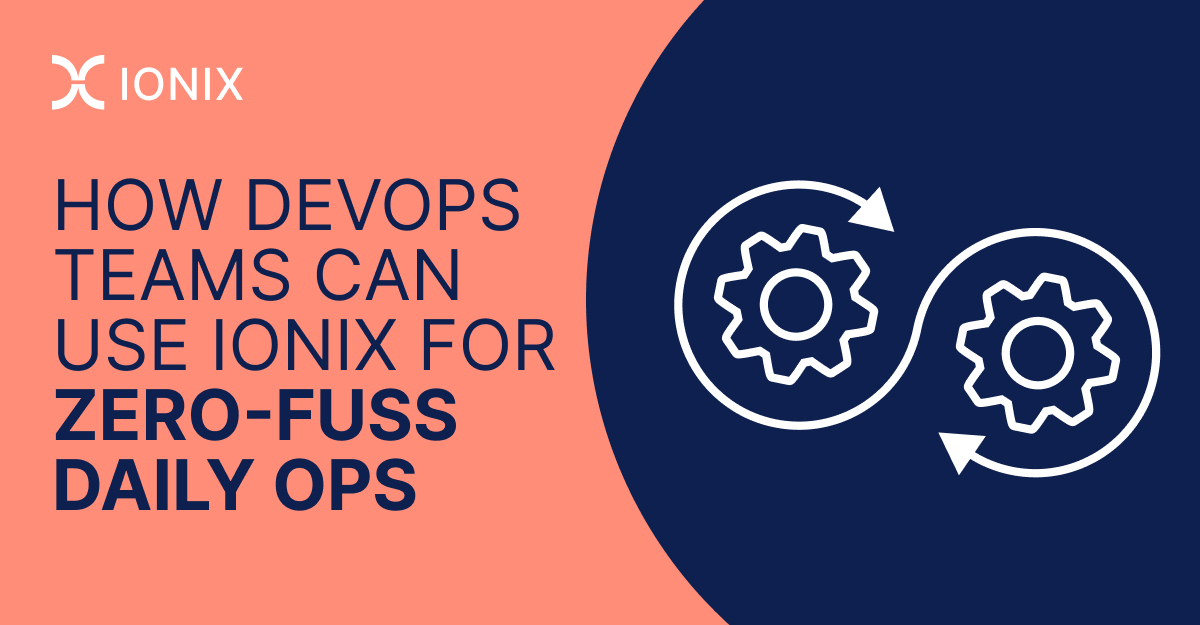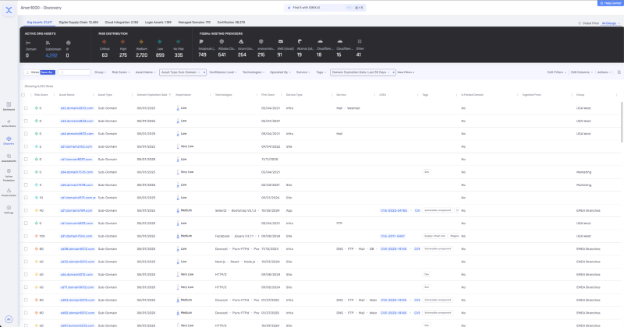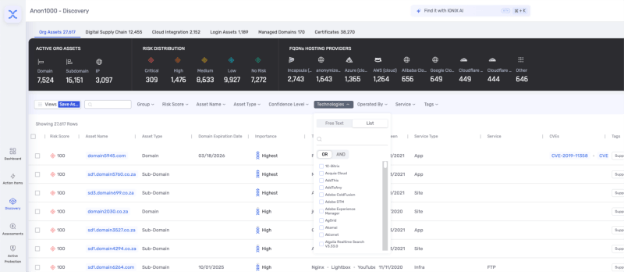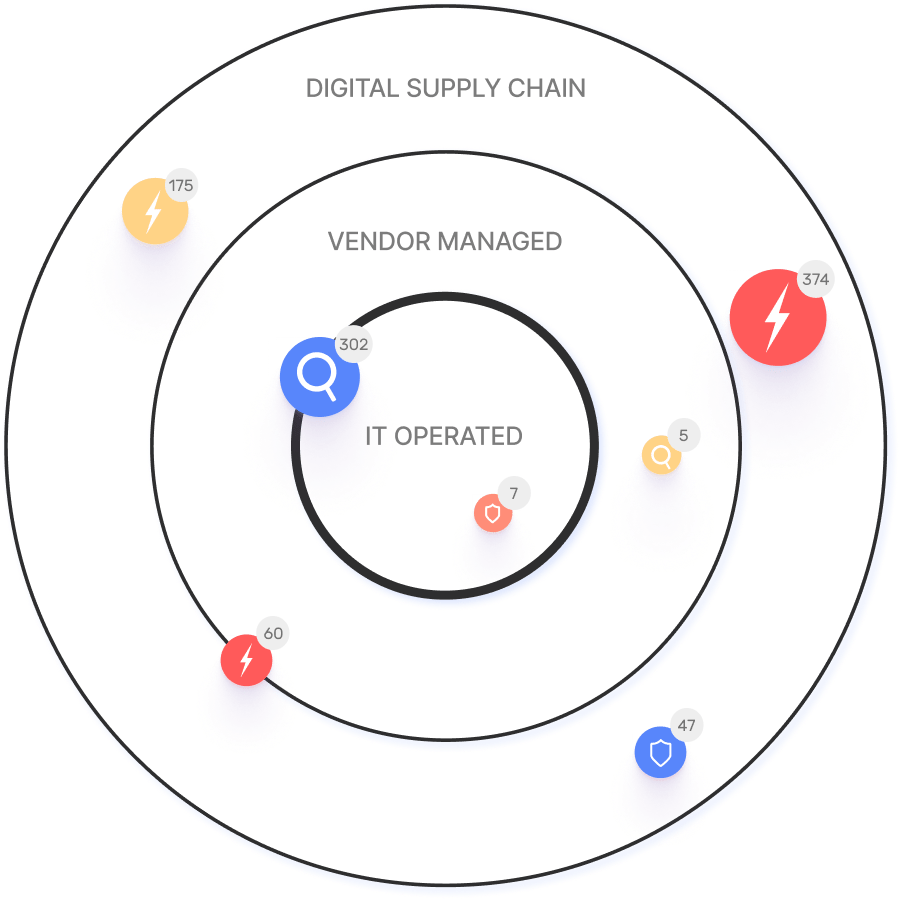How DevOps Teams Can Use IONIX for Zero-Fuss Daily Ops

Our DevOps environment moves fast. Cloud instances spin up and down. Containers launch and retire. New APIs appear without warning. Trying to track it all with scripts, spreadsheets, and one-off scans meant I often missed things. A TLS certificate would slip through. An open port would go unnoticed. I’d spend hours chasing down who owned an asset.
I lead the DevOps and IT team at IONIX, where I’ve been for nearly four years. Before that I spent close to a decade in the IT world, backed by a software engineering degree. I joined IONIX as an IT & DevOps engineer and have been leading the team for the past two years. Alongside the hands-on work I’ve been wrapping up my MBA and focusing on building processes that keep our infrastructure stable, secure, and able to move fast.
In a smaller organization like IONIX, DevOps takes on many security-related tasks along with implementing and maintaining our infrastructure and tools. So my team started ‘dogfooding’ – leveraging our own IONIX platform for DevOps tasks, to give us a single live view of everything we expose to the internet. Now I see problems in seconds instead of days, get timely email alerts, automate ticketing, and free my team to focus on real work.
Below are three key ways IONIX platform helps me every day. I explain why each matters, how I use it, and the impact on our ops.
Always-On Certificate Monitoring
Why it matters
Every TLS certificate has a shelf life. When one expires users see errors, APIs fail, and services go offline. In the past I relied on synthetic monitors or calendar reminders. Adding a new certificate to the check list was manual. Inevitably someone forgot. We’d scramble to renew certs in production often during peak hours. That led to downtime.
How I use IONIX
- Automatic discovery: IONIX finds every public certificate across all our cloud accounts and CDNs, without any setup.
- Unified dashboard: I get a table that shows expiry dates, cipher strength issues, and hostname mismatches in one place.
- Custom email alerts: I pick thresholds (30 days, 14 days, 3 days) and IONIX sends an email at each point.
- Ticket integration: For critical services, I let IONIX automatically open a ticket in Jira when a cert nears expiry.
The Impact
- Zero surprise outages: We haven’t had a cert-related outage in over six months.
- On-time renewals: Alerts hit our inbox early enough to renew during business hours.
- Clear accountability: Everyone knows which certs are tracked and when they’ll expire.
This setup means I don’t worry about forgetting to monitor a cert. I just handle renewals as they come up – only when necessary since most of them are auto-renewed.

Live Attack Surface API Mapping
Why it matters
Our public footprint is constantly changing. We spin up VMs, containers, serverless functions, and third-party integrations. Any of these can open a new port or expose an undocumented API. Manual scans take hours and are out of date as soon as they finish. Spreadsheets become stale. Blind spots creep in.
How I use IONIX
- Continuous discovery: IONIX scans our entire internet-exposed estate in real time.
- Service classification: Each host-port pair is tagged with its service name, geolocation, and a risk score.
- On-demand filtering: In the dashboard, I filter by open ports to see all live services. I also filter by service type = API to list every API endpoint.
- Seamless exports: I export filtered lists as CSV for compliance reports or feed them directly into our CI/CD pipelines.
The Impact
- Instant awareness: New endpoints appear on the map the moment they spin up.
- Focused effort: High-risk services bubble to the top, so I tackle what matters first.
- Effortless scale: Whether we have ten services or ten thousand, IONIX keeps up without extra work.
Because the map stays live I no longer worry about anyone spinning up a service that slips under the radar. I can spot gaps and fix them before they cause issues.
Keyword-Driven Tech Inventories
Why it matters
We run a mix of technologies: WordPress sites, Nginx proxies, Apache servers, Redis clusters and more. During security audits or maintenance windows, I need current lists of each platform. Writing custom scans or parsing logs often misses unusual ports or forgotten environments.
How I use IONIX
- Automated fingerprinting: IONIX identifies every exposed asset and classifies it by technology.
- Simple keyword filters: I type a keyword – “wordpress,” “nginx,” or “apache” – into the dashboard and hit enter.
- Live inventories: I get a real-time list of matching assets, complete with risk scores, hostnames and ports.
- Automatic updates: Whenever a new instance goes live or an old one retires, the inventory updates itself.
The Impact
- Complete coverage: No more “staging” or “test” environments hiding on odd ports.
- Prioritized patching: I see outdated WordPress versions or vulnerable proxies first.
- Audit readiness: I export fresh inventories on demand for compliance or review.
This feature saves hours of manual scanning. I can prove instantly which versions we run and where they live.

Best Practices I Follow
Over time, I’ve developed a few habits to get the most out of IONIX platform:
- Email-only alerts – I prefer email alerts for visibility and audit trails. They keep noise out of chat channels.
- Automated ticketing – IONIX opens tickets in Jira or ServiceNow for high-severity findings. That ensures nothing slips through the cracks.
- Saved dashboard views – I pin four collumns – certificate checks, port maps, API lists and tech keyword inventories on my team’s homepage. One glance covers everything.
- Consistent tagging – We enforce asset tags (env:prod, team:backend, app:web). That makes filters reliable and easy to share.
- Weekly review – Every Sunday I scan the IONIX dashboard to catch any drift or unexpected changes.
These small steps have a big impact. They turn the platform from a tool into an integral part of our workflow.
Why IONIX Makes a Difference
- Less busywork: Tasks that used to take days now take minutes.
- Proactive security: I catch issues before they become incidents.
- Team focus: My engineers spend time on features – not inventories.
- Audit readiness: Fresh cert, port, API, and tech inventories are just a click away.
By automating these core areas – TLS cert monitoring, attack surface mapping, and tech inventories – IONIX platform gives me a single source of truth. I don’t juggle scripts, scans, or spreadsheets. I get live, policy-driven insights into everything we expose.
Wrapping Up
If you’re still piecing together separate tools to track your public footprint, you know how much work it is. IONIX cuts through that noise. It automates the routine so you can focus on real DevOps challenges.
Begin by enabling TLS certificate monitoring notifications and setting your alert thresholds. Port and API discovery happens automatically – just apply your filters to see live endpoint maps. Finally use keyword filters to build and maintain your technology inventories.
Each step saves you time and reduces risk. With IONIX platform daily DevOps ops become zero-fuss tasks and that change feels huge.





